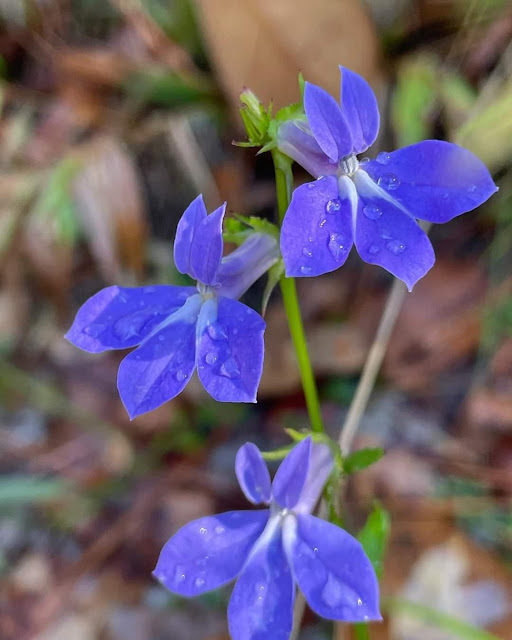 |
| Flowers |
 |
| Foliage in situ |
Southern lobelia (Lobelia georgiana) seems to be a rather poorly described species based on the lack of unified descriptions of this species online. While some sources list its natural range as occurring throughout much of the Southeastern Coastal Plain - Mississippi to Virginia, others list it as native only to 3 of these counties - Alabama, Georgia and Florida. in Florida, it has been vouchered from 10 central Panhandle counties with a disjunct population reported from Marion County. It seemingly has often been misidentified with other closely related species. In L. georgiana the lower lip of corolla is usually glabrous on upper surface near throat
of corolla tube, but occasionally papillate or minutely pubescent
(with very short hairs); calyx tube usually glabrous, rarely with a
few scattered chaffy hairs, but often with a warty texture; corolla
tube glabrous. Regardless, throughout its range, it occurs most often in forested wetland habitats such as along riverine floodplains.
This is a perennial wildflower that dies back to the ground in winter. Its basal leaves are similar to other members of this species. The simple flower stalks eventually reach 3-4 feet in height by late summer. The leaves are alternate on the stem and have entire margins or are shallowly toothed. The deep blue to purple blooms are produced in fall. They are of greatest interest to bees for pollination.
I am not aware of this lobelia ever being offered for sale commercially. It would require conditions very similar to other wetland members of this genus.
The flower photo was taken by Lily Byrd and used with permission. The aspect photo at the bottom is credited to Mathew Mrizek and was posted to iNaturalist.
No comments:
Post a Comment
Please let me know if this site and the various postings have been useful to you.